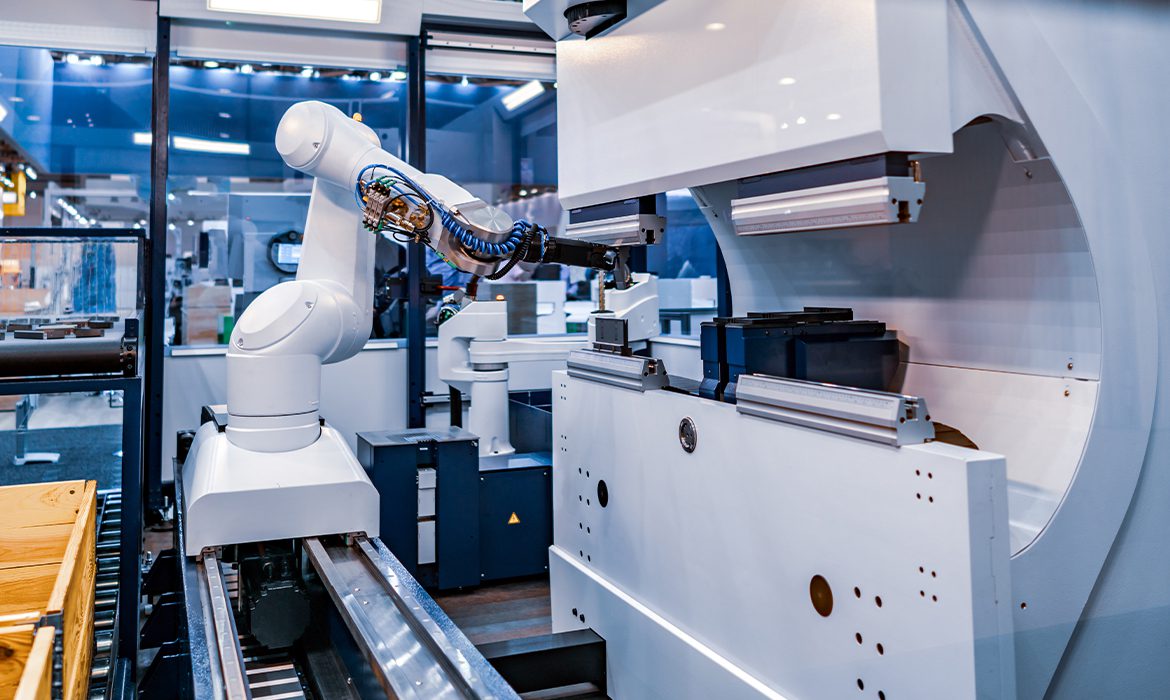Americans’ traditional road to the middle class cannot be traveled easily in today’s world. Gen Z is learning this all too well as they’ve seen the world around them change drastically throughout their formative years. First, they grew up watching millennials take the more conventional route of obtaining a four-year degree, only to accumulate student loan debt and struggle to pay it off with low-paying jobs. And now with COVID-19, those same kids are watching their parents get laid off or furloughed from their white collar, “stable” jobs.
Breaking the stigma around manufacturing careers isn’t only the key to their future…but ours as well.
The Misconceptions of Manufacturing Careers
Since the end of WWII, it’s been ingrained in us that if you bypass college, a career path leading to financial stability is a pipe dream. This makes middle-skills jobs, typically requiring a two-year curriculum post secondary education, less sought after than jobs requiring a four-year degree. But here’s the rub: Middle skill careers are paying the same, or even higher wages than those other jobs do, even when starting out. Mitch DeJong, chief technology officer of Brooklyn Park manufacturer Design Ready Controls, credits this misconception to the “dirty hands stigma.”
The stigma is reminiscent of an industrial wasteland. Early 20th century manufacturing facilities still conjure up images of dirty and dangerous places where an entire skills-centric workforce is relegated to a back-breaking career in dismal conditions, simply because they didn’t go to college. But today’s advanced manufacturing facilities have revamped and revitalized their operations, not only to upgrade their AI and robotics, but to maximize the safety and wellbeing of their workforce, whom they desperately need to retain and promote in order to remain competitive in the 21st century.
Skills Gap, Meet Gen Z
Simply defined, the skills gap is a global talent shortage of skills-based workers that could reach 85.2 million people by 2030. According to the Fabricators and Manufacturers Association, “Among U.S. teens, 52% expressed little or no interest in a manufacturing career. When asked why, the respondents said, “Manufacturing was a declining field, with unprofessional, dead-end jobs, dirty factories and frequent layoffs.” Industry Week also highlights the fact that parents aren’t as likely to talk to their kids about the industry because they believe manufacturing is outdated, low-paying or unchallenging. Not only that, but only 3 in 10 parents would consider guiding their child toward a career in the field according to the National Association of Manufacturers and the Manufacturing Institute.
This means that the skills gap isn’t driven by a shortage of people, but rather a shortage of people with skills. And this crevasse is only deepening because 10,000 baby boomers a day are reaching retirement age for the next 14 years. The $1.748 trillion-in-potential-lost-revenue challenge here is for industry, government and educators to get parents and Gen Z excited about the surplus of middle-skills manufacturing positions about to become available that are as respectable as they are financially rewarding. According to a Salary Survey report from Industry Week, the average salary for a manufacturing manager in 2018 was $118,500.
Modern Manufacturing Today
It’s images like this one of Ford’s Truck Plant in Dearborn, Michigan, that perpetuate the “dirty hands stigma”, yet it hasn’t looked like this in years.
Ford, like most other advanced manufacturers, has transformed its facilities into environmentally-conscious workplaces with ultra-modern features, including a “living roof” as a safeguard to preserving air and water quality. This is an example of a big win for attracting Generation Z. According to Gen Z expert Corey Seemiller, “Many of them want to work in an organization that is committed to environmental advocacy, as evidenced in their spending, products and organizational practices.”
Youth Apprenticeships: A Win-Win
According to SHRM, the combination of a tight labor market and the high cost of a college education is fueling the interest in youth apprenticeships. This is great news for all, as apprenticeships are a win-win, offering students the chance to find stable middle-skills jobs that they like and can grow into, while their employers create a happy workforce they can groom from an early age.
In general, here’s how it works. According to Kelly Steinhilper, vice president, Communications SC Technical College System, “High school juniors and seniors combine high school curriculum and career and technology training with critical on-the-job training performed at a local business. The students can pull in a paycheck through part-time work while earning a national credential in one of many high-demand occupations. They gain critical workforce experience while earning their high school diploma and some college credit. At the same time, South Carolina’s business and industry that need highly skilled workers can build a solid workforce pipeline for the future.”
McLeod Information Systems, LLC, (MIS) provides a perfect example. Debbie McLeod, president and co-founder of MIS, reported that she found the youth apprenticeship program to be rewarding on many levels. “For one, it allows us as a company to prepare and grow our future industry leaders. Everyone in the company sees the value of the program. For the company employees that work directly with the apprentices, it is the brighter part of the workday when they get to instruct these impressionable minds.”
Is Gen Z Worth Your Attention?
The short answer is yes. The skills gap will cost companies trillions of dollars in lost economic opportunity if the talent shortage continues. This has created an unprecedented demand for middle-skills jobs that is guaranteed to remain strong for years. Between 2014–2024, 48% of job openings will require middle skills.
Simply put, manufacturers need to invest in reaching Gen Z today in order to thrive tomorrow. Stigmas take time to break, so why not spend it getting to know each other a little better.
